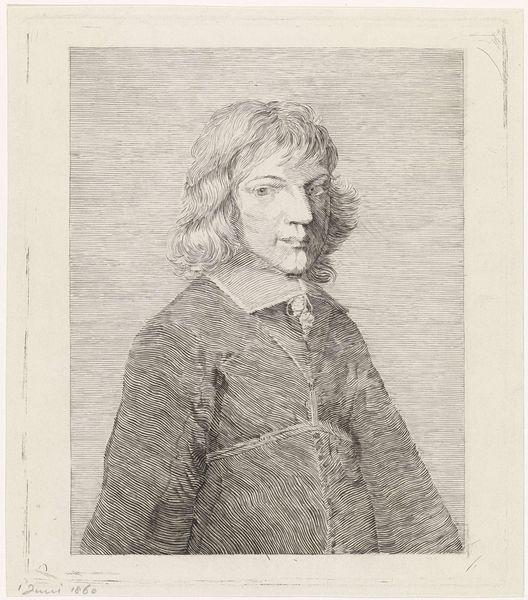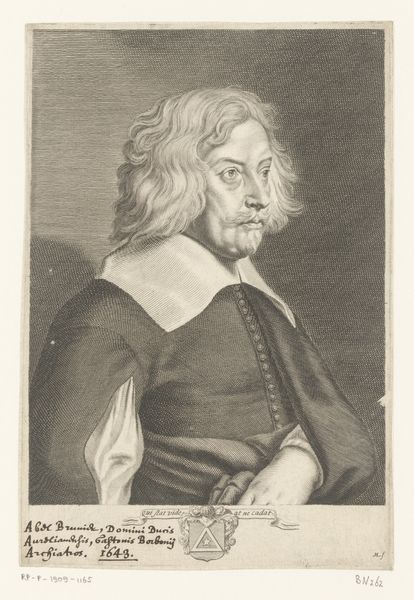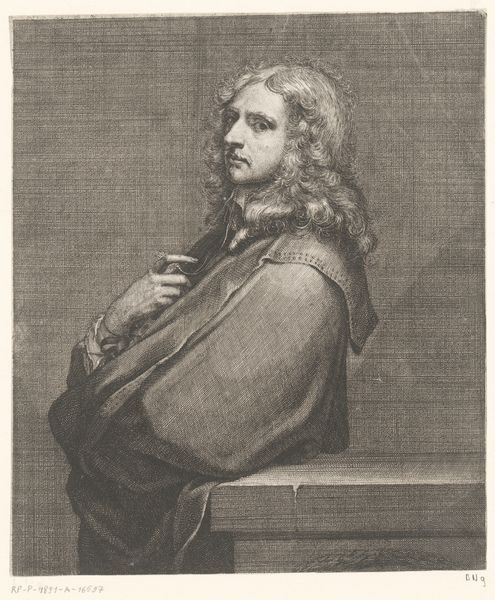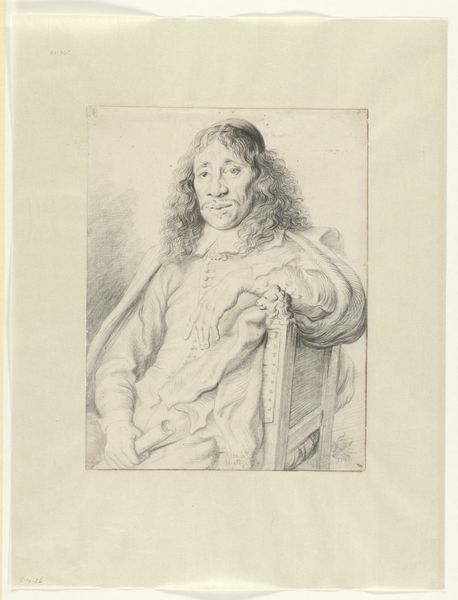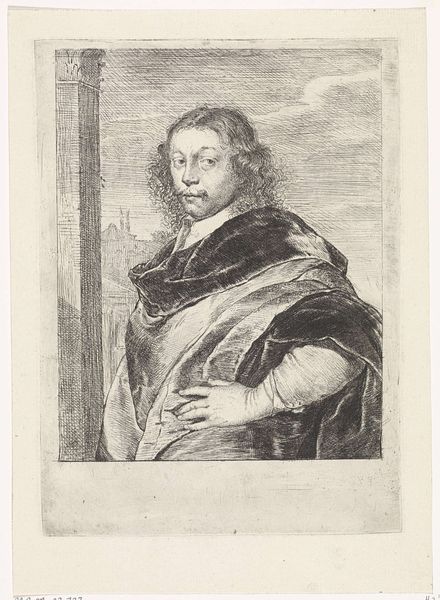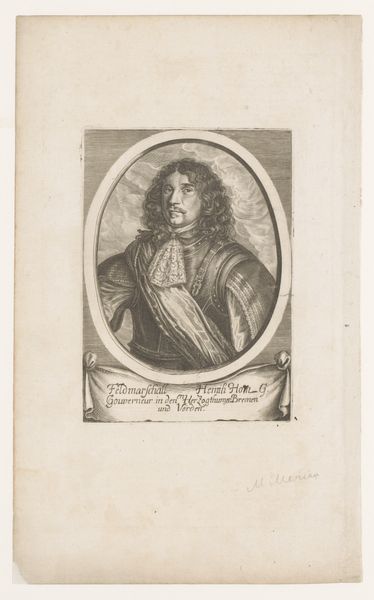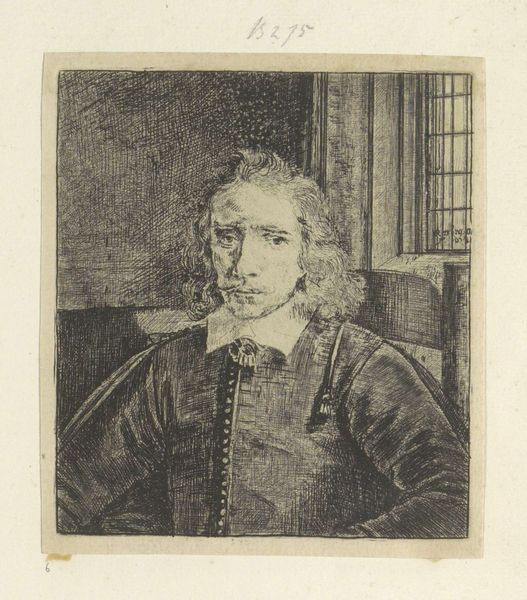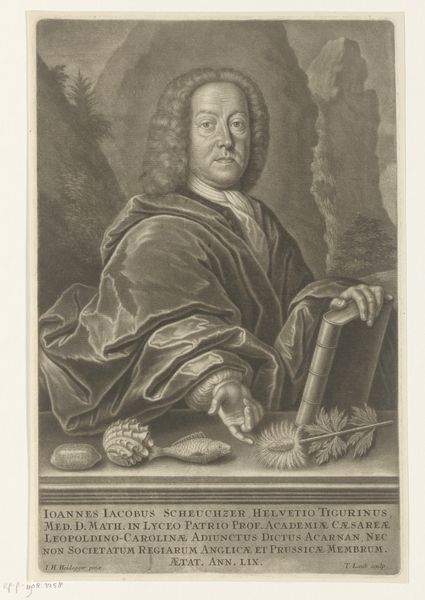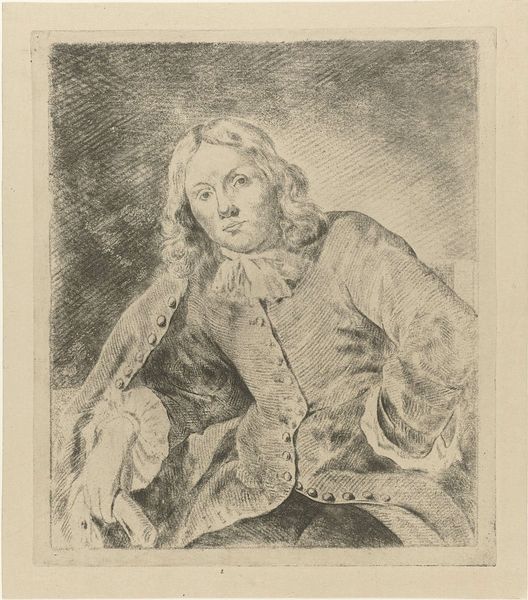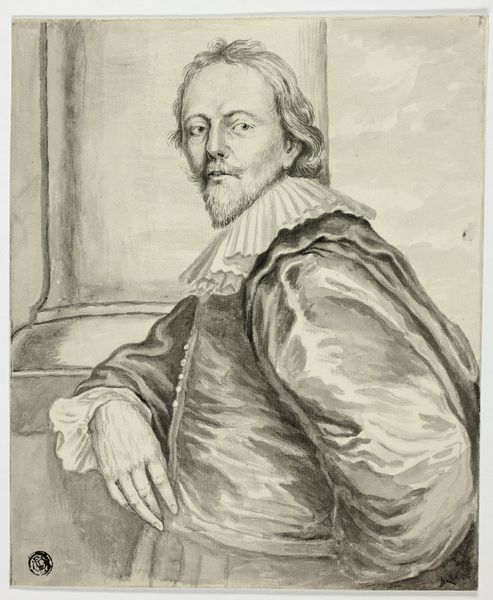
print, engraving
#
portrait
#
baroque
# print
#
portrait drawing
#
engraving
Dimensions: height 161 mm, width 123 mm
Copyright: Rijks Museum: Open Domain
Editor: Here we have "Portret van een onbekende man met een hoed in de hand," a portrait from 1651 by Johann Philipp Lemke, created as an engraving. The texture achieved through the engraving process is incredible! What strikes me most is the subject's direct gaze; it’s almost unsettling. How do you interpret this work? Curator: It is indeed compelling. Let's consider what the act of holding a hat signifies in 17th-century portraiture. A hat often denotes status or profession, and presenting it in hand, rather than wearing it, can suggest humility, respect, or even a relinquishing of power. Think about what symbols persist even when their explicit meanings are lost to time. Does the rendering, particularly the cross hatching in the background, create a certain psychological unease for you? Editor: It does create tension, as if he is caught between worlds! It definitely lends itself to a more psychological reading of the subject. Curator: Precisely. The baroque era valued drama and emotional intensity. So think of what kind of statement Lemke might be trying to make by simplifying or intensifying what would otherwise be a simple representation of likeness and social rank? Editor: So it becomes more than just a portrait; it is almost an introspective study, playing with expectation. Thanks, that helps me appreciate the depth of its historical and cultural symbolism so much more. Curator: My pleasure. It shows how cultural memory lives within visual language, constantly reshaping our perception.
Comments
No comments
Be the first to comment and join the conversation on the ultimate creative platform.
